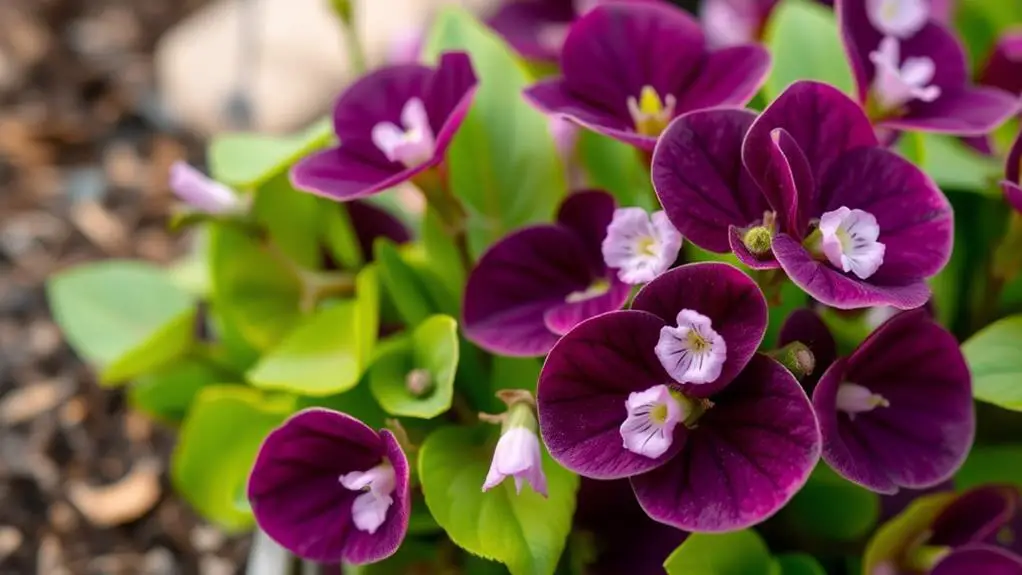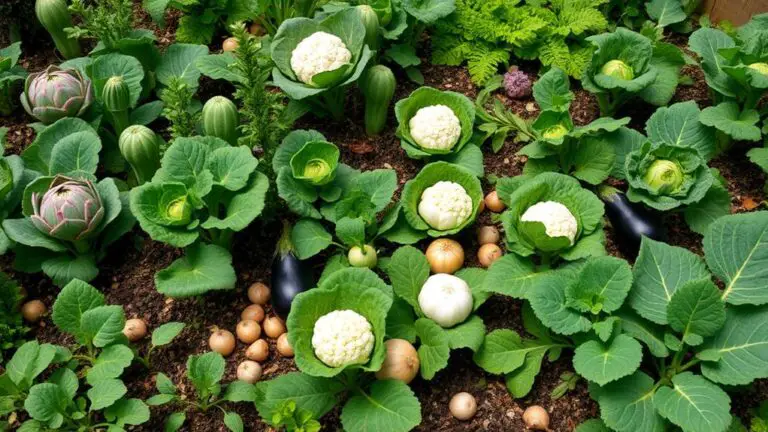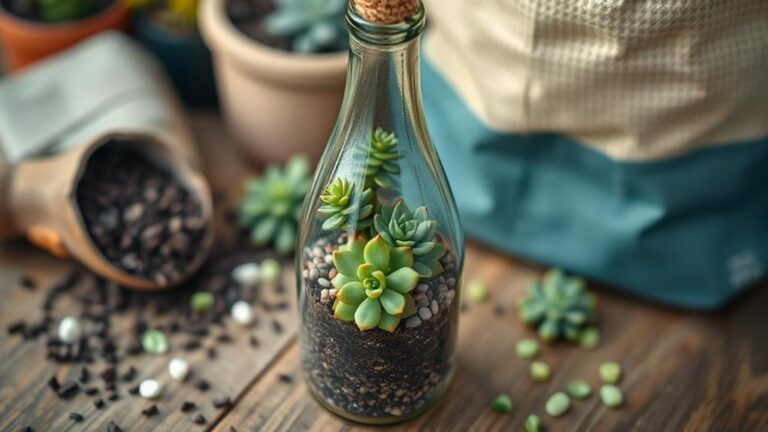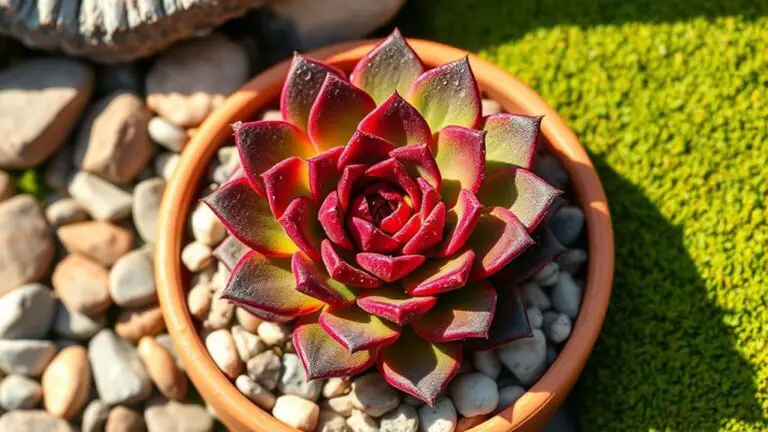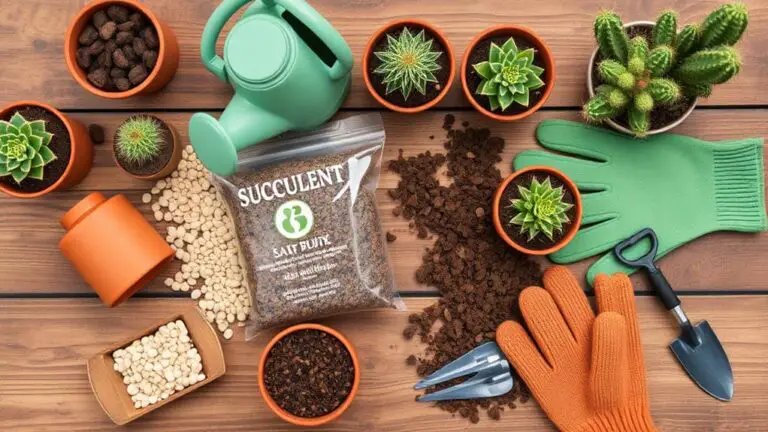Purple Heart Tradescantia Pallida Care Essentials
When it comes to Purple Heart Tradescantia pallida, knowing the fundamentals of its care can make all the difference between a thriving plant and a struggling one. You'll want to focus on providing the right amount of light, water, and nutrients to keep those vibrant purple leaves looking their best. But what happens if you don't meet these needs, and how can you troubleshoot common issues like root rot or leggy stems? Let's explore the essentials you need to guarantee your Purple Heart flourishes and what steps to take when things go awry.
Botanical Classification
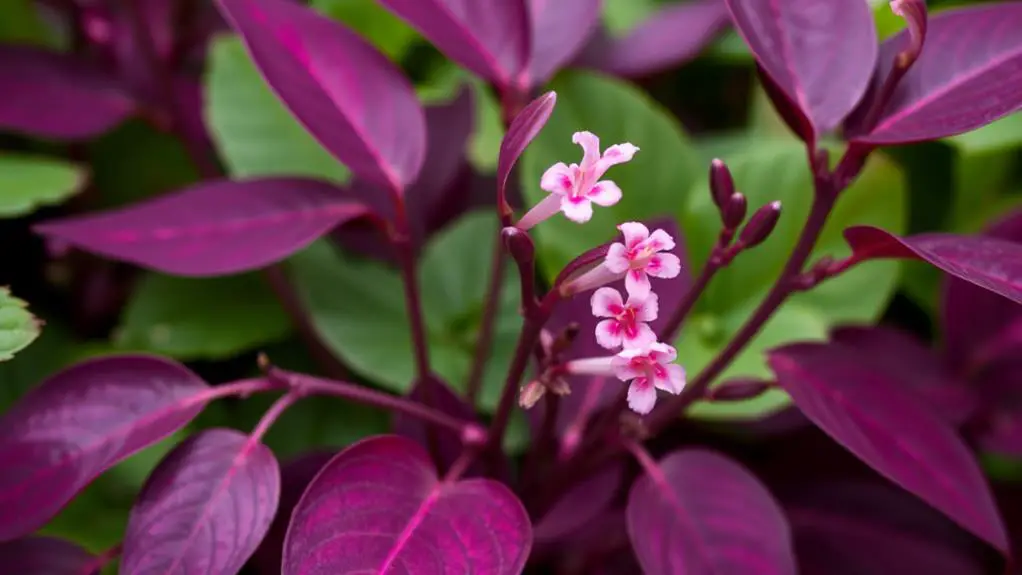
Tradescantia pallida, often referred to as purple heart or wandering jew, is an evergreen perennial that's native to northeast Mexico, ranging from Tamaulipas to Yucatan.
Originally classified as Setcreasea pallida by botanist Joseph Nelson Rose in 1911, it was reclassified by D.R. Hunt in 1975.
This plant belongs to the Commelinaceae family, which includes other Tradescantia species.
With its dark purple, lance-shaped leaves, Tradescantia pallida stands out in any garden.
It's hardy in USDA zones 7-10, meaning it can survive in various climates.
Understanding its botanical classification helps you appreciate its resilience and adaptability.
This evergreen perennial adds vibrant color and texture to your garden, making it a delightful and durable choice.
Physical Characteristics
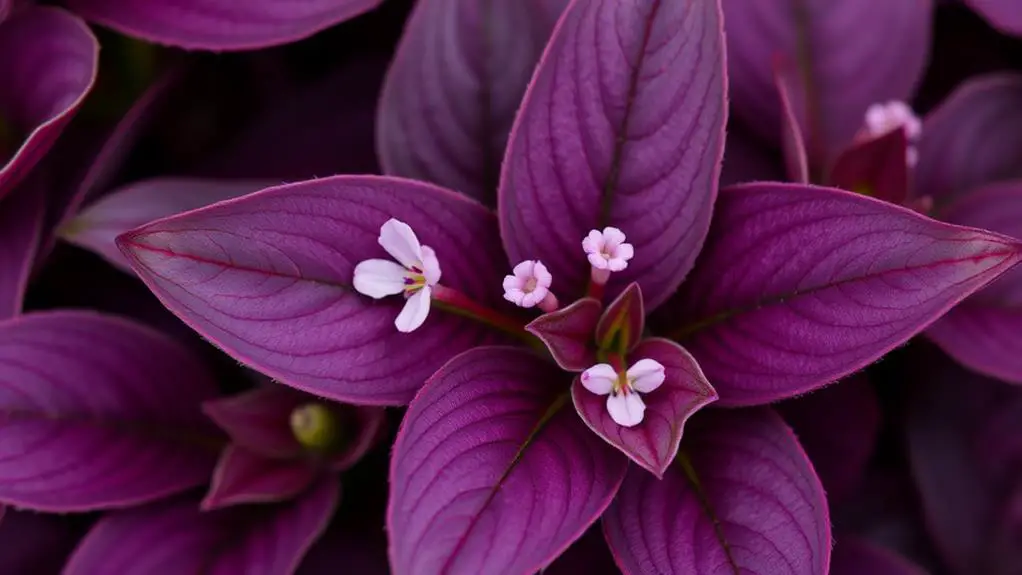
With its striking dark purple, lance-shaped leaves, the purple heart plant is a standout in any garden.
Tradescantia pallida showcases purple leaves that can grow up to 7 inches long, covered with fine pale hairs. The plant's vibrant purple stems and striking purple foliage create a beautiful contrast, especially against gold or variegated leaves. You'll also notice small, pale purple flowers with yellow stamens, usually blooming from midsummer to fall.
However, be gentle; its fragile stems break easily, contributing to its trailing growth habit.
Purple Heart spreads rapidly, making it an excellent ground cover. By understanding these physical characteristics, you can better appreciate and care for this unique and vibrant plant in your garden.
Growth and Hardiness
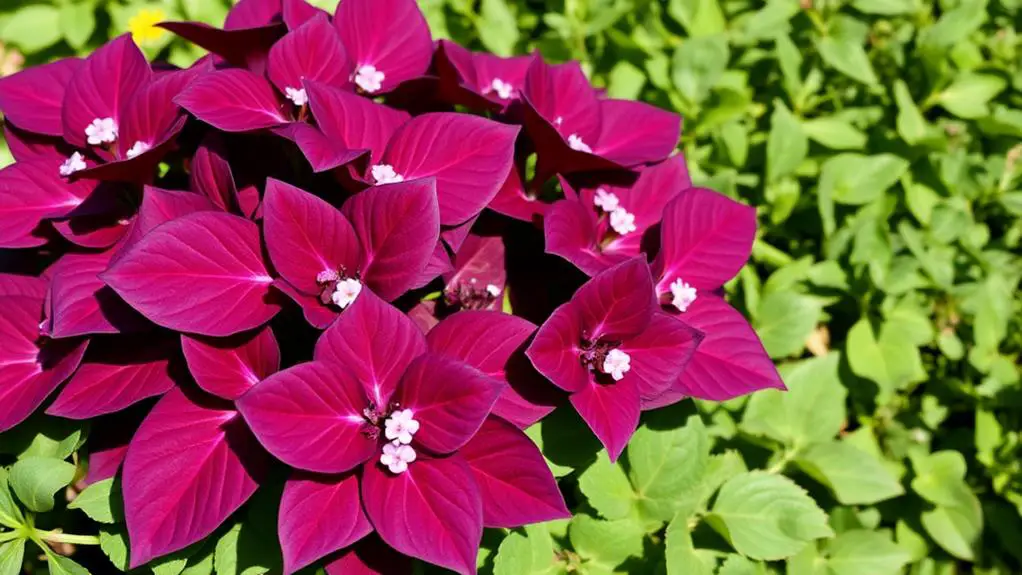
Purple Heart thrives in USDA zones 7-10, where it flourishes in warm climates and comes back strong each spring even after dying back in winter.
This hardy plant typically reaches 1-2 feet high and spreads wider, making it a fast-spreading ground cover. In colder areas, you can grow it as an annual or houseplant, but be sure to protect it from frost and temperatures below 50°F.
For ideal growth, place your Purple Heart in bright indirect light; too little light can turn those vibrant purple leaves green. Use well-draining soil to prevent waterlogging.
Even though it can tolerate drought, thorough watering every 7-10 days in the growing season and every 3 weeks in winter guarantees healthy regrowing.
Care Requirements
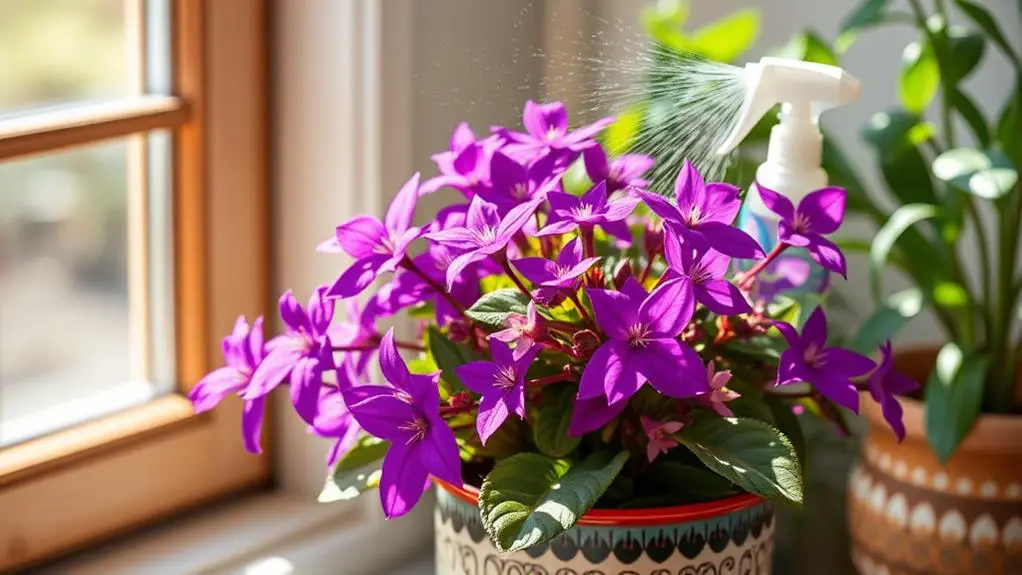
Caring for your Purple Heart plant involves a few essential steps to guarantee it stays healthy and vibrant. First, provide at least 8 hours of bright indirect sunlight daily. Keep the temperatures between 65°F and 80°F, as these plants are not frost-tolerant. Use well-draining soil to assure ideal moisture retention. Water thoroughly every 7 to 10 days during the blooming season, letting the top 1-2 inches of soil dry out between waterings. Reduce watering to every 3 weeks in winter. Fertilize every month during the growing season with a balanced, water-soluble fertilizer at half strength.
Here's a quick reference:
| Care Step | Details |
|---|---|
| Sunlight | 8 hours of bright indirect sunlight |
| Temperature | 65°F to 80°F |
| Soil | Well-draining, peat moss or perlite |
| Watering | Every 7-10 days during blooming |
| Fertilizing | Every month at half strength |
Common Issues and Solutions
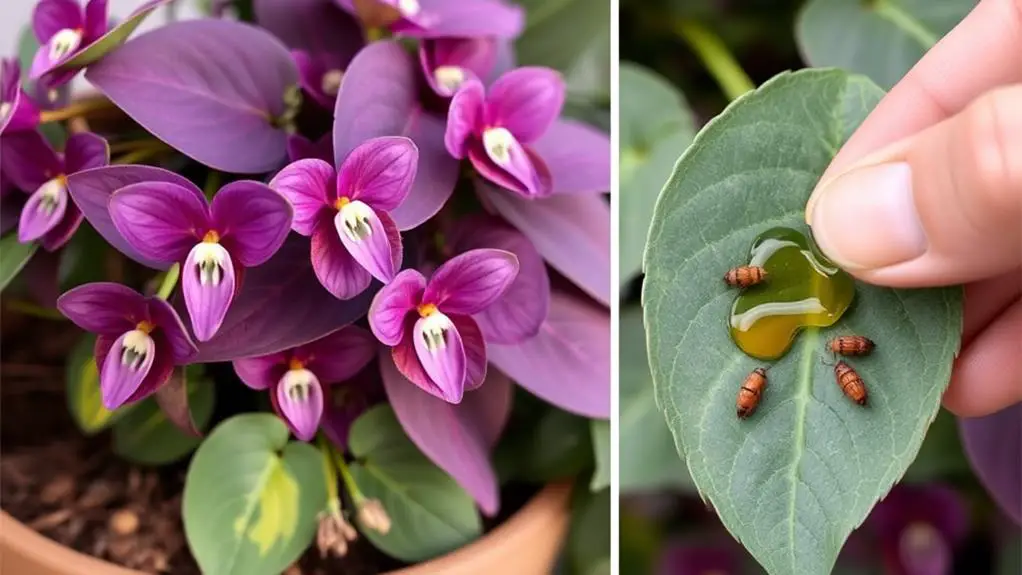
Even with the best care, your Tradescantia Pallida can still encounter a few common issues.
Overwatering is a big one, leading to yellowing leaves and root rot. Make sure the top inch of soil dries out before watering again.
Insufficient sunlight can cause the purple heart plant's leaves to turn green, so aim for at least 8 hours of bright, indirect light daily.
Browning leaf tips might mean too much sun or low humidity; move the plant to filtered light and up the moisture.
Pests like aphids and mealybugs can be managed by regular checks and insecticidal soap.
Pruning helps prevent leggy stems and promotes bushier growth. Remove dead or yellowing leaves during the growing season for a healthier plant.
Frequently Asked Questions
Does Tradescantia Pallida Like Sun or Shade?
You should give Tradescantia pallida plenty of sun for the best color. It thrives with 6-8 hours of bright indirect sunlight daily. Be cautious of too much direct sunlight, though, as it can burn the leaves.
How Often Should I Water My Purple Heart?
Water your Purple Heart every 7 to 10 days during blooming season, letting the top 1-2 inches of soil dry out. In winter, water every 3 weeks. Always check soil moisture to avoid overwatering and root rot.
What Problems Can Tradescantia Pallida Have?
Your Tradescantia Pallida can face issues like overwatering, insufficient sunlight, pest infestations, browning leaves, and nutrient deficiencies. Monitor your plant closely and adjust care practices to keep it healthy and vibrant.
Can Purple Heart Grow Indoors?
Yes, you can grow Purple Heart indoors. Just guarantee it gets at least 8 hours of bright, indirect light daily and keep the temperature between 65°F to 80°F. Water when the topsoil dries out and watch for pests.
Conclusion
You've got everything you need to care for your Purple Heart Tradescantia pallida! With the right amount of light, water, and a little bit of fertilizer, your plant will thrive. Don't forget to prune regularly to keep it looking its best. If you run into any issues, just remember the common problems and their solutions. You can do this! Happy gardening, and enjoy watching your Purple Heart flourish.

